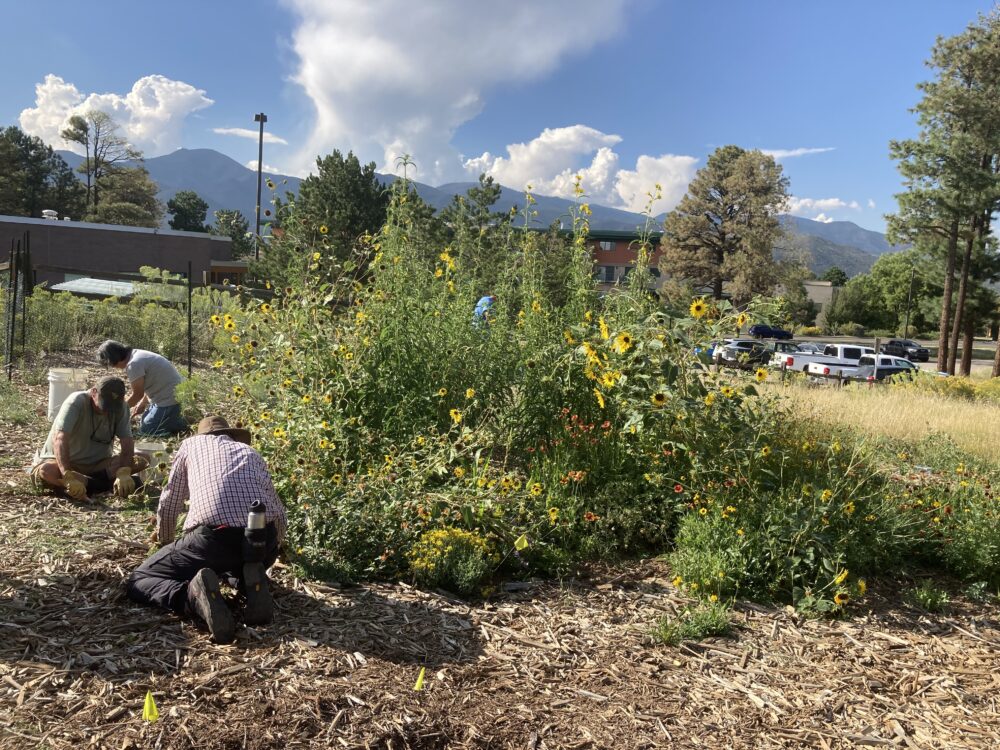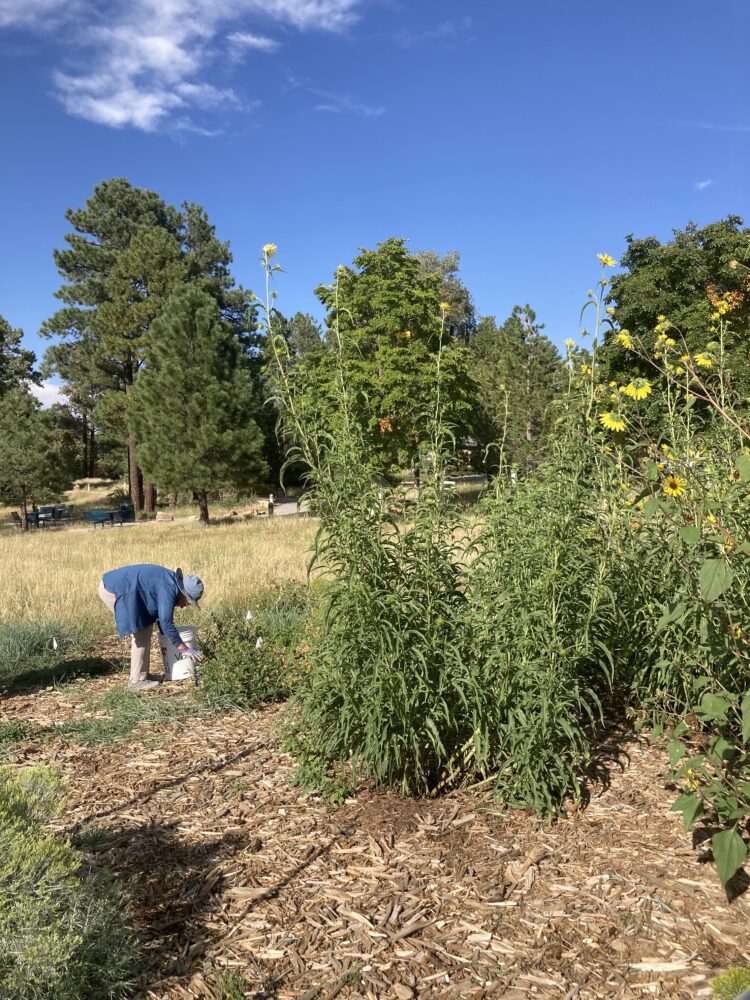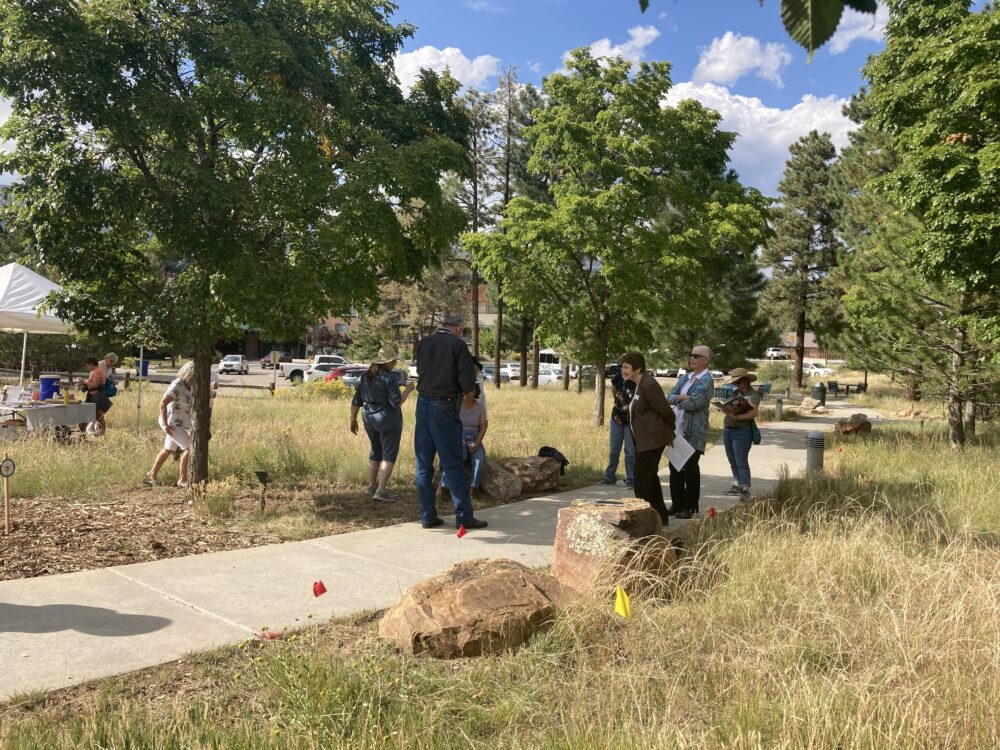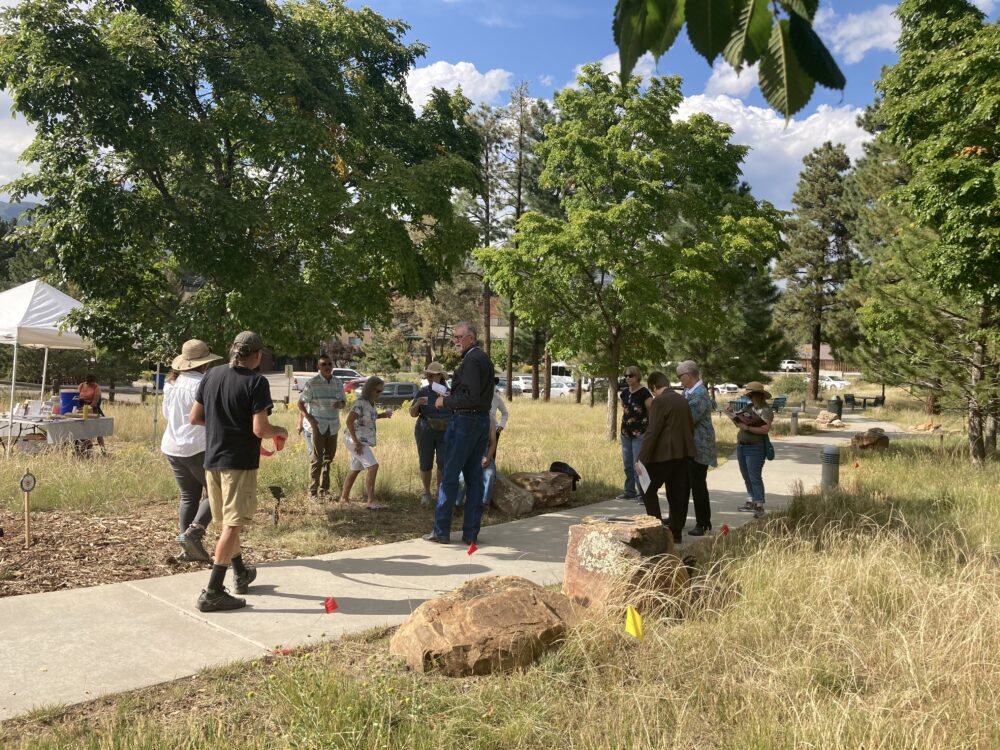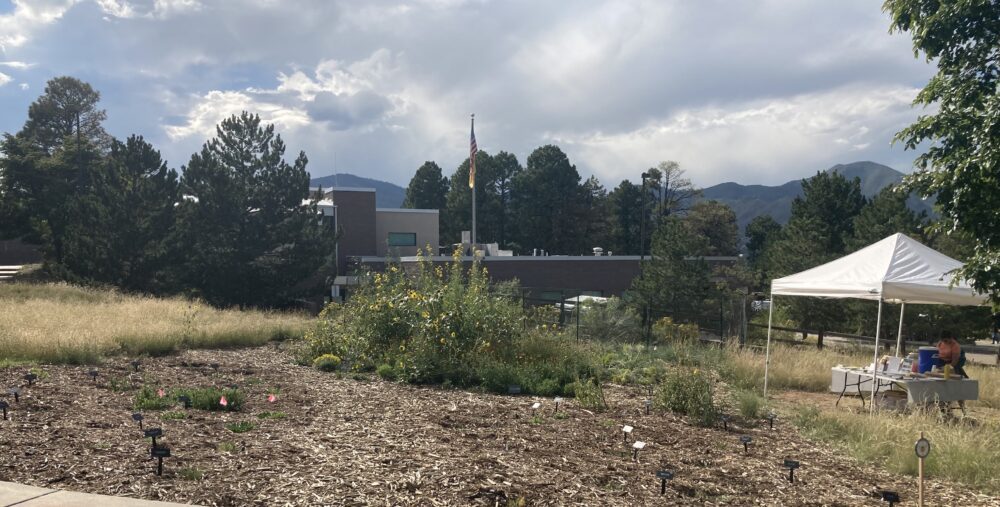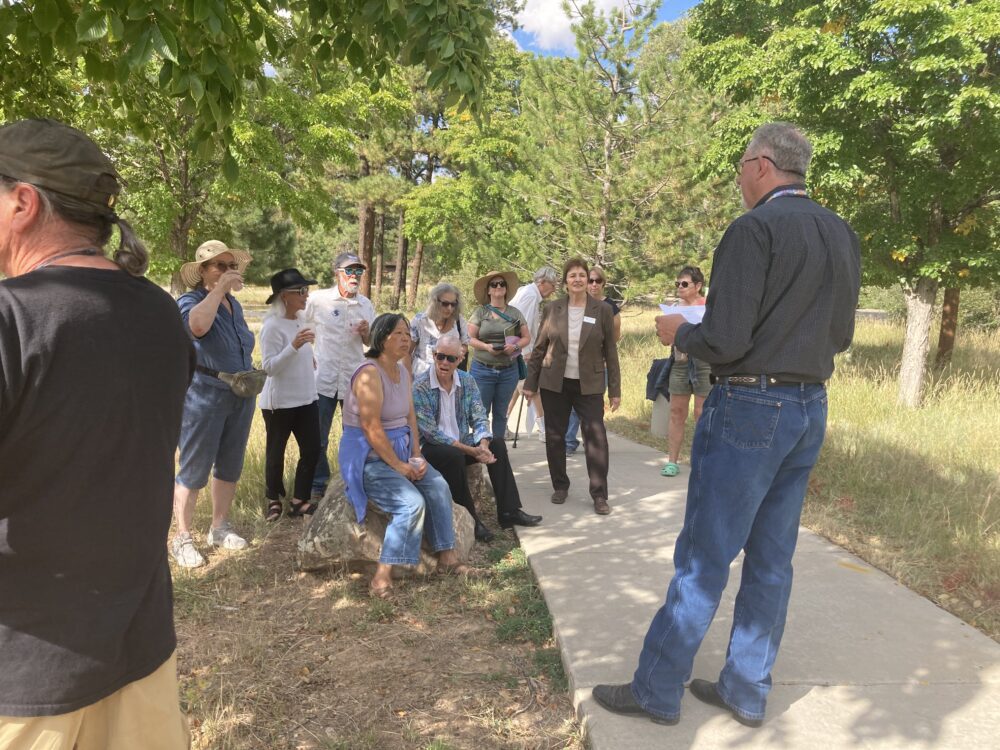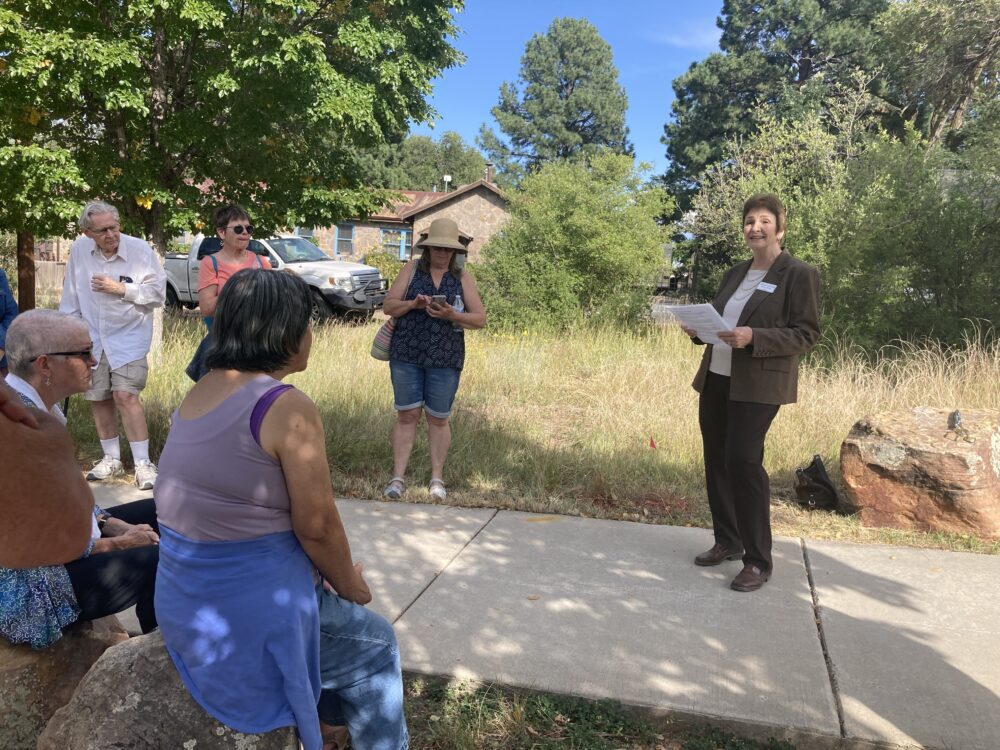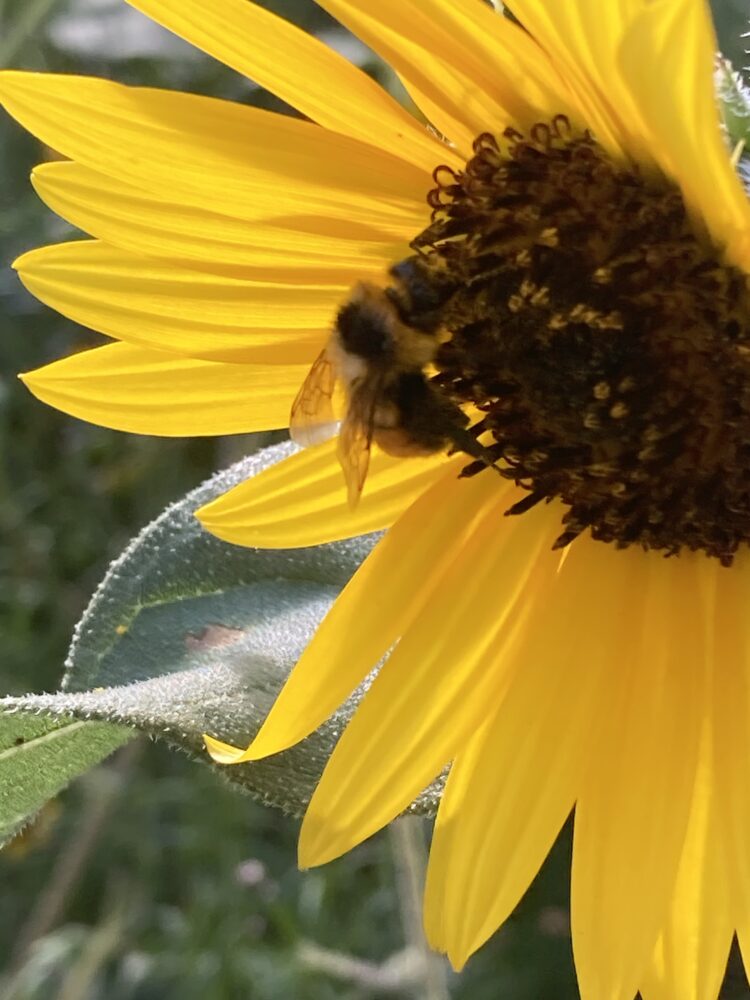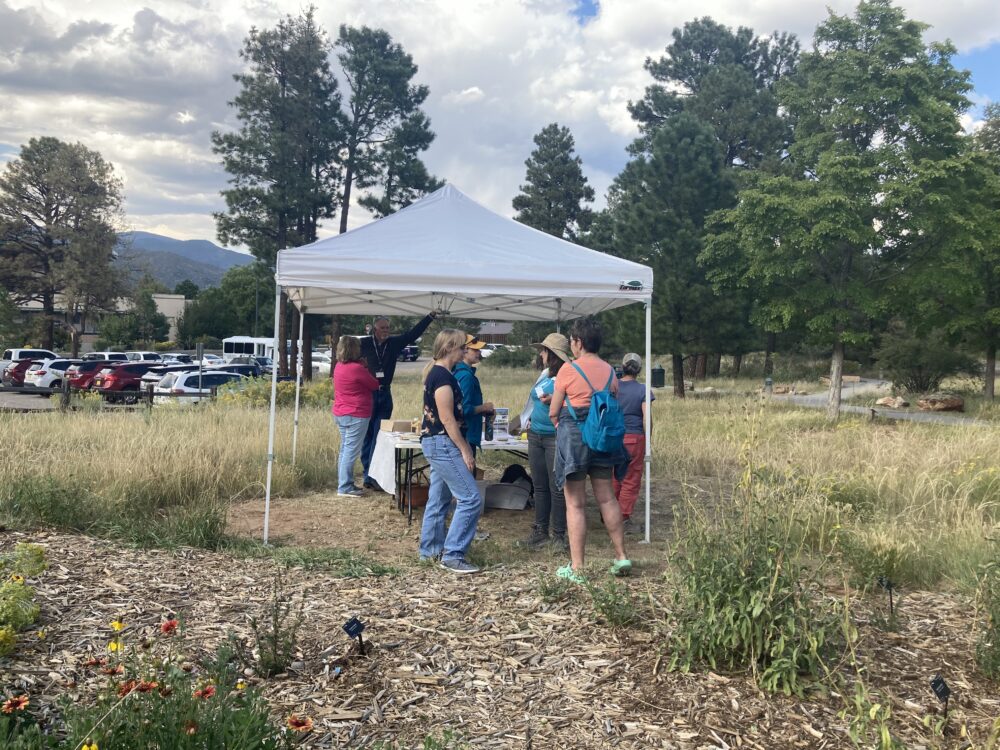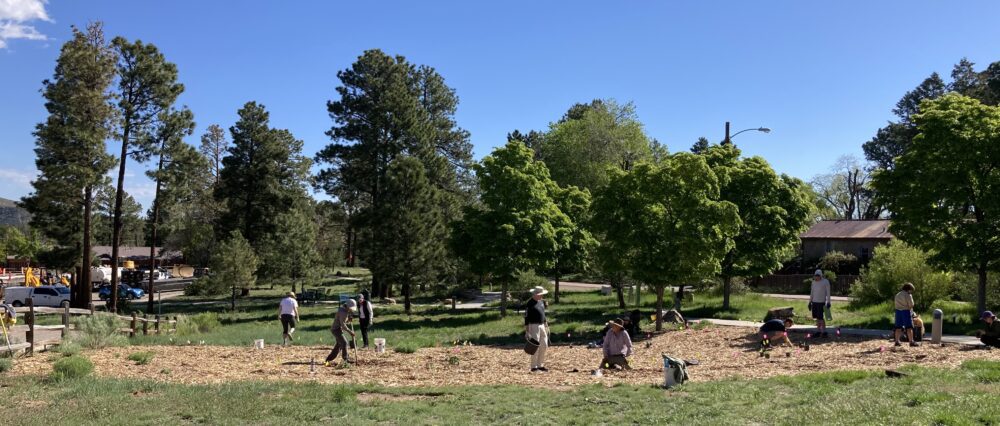
Volunteer day in the Pollinator Demonstration Garden May 2024 | Dana Ecelberger
The garden is located on Bathtub Row behind the Extension Office and next to the Senior Center. 2024 marked the beginning of the work to transform this somewhat weedy open space on Bathtub Row into a pollinator paradise. Volunteers turned out on three separate events to first mulch the area, then to help weed and plant native perennials donated by Plants of the Southwest, and to plant shrubs and trees along the back fence. The area demonstrates how homeowners and municipalities can incorporate native pollinator plants into landscapes of all sizes. The front area closest to the sidewalk has two perennials beds in a more formal arrangement, exemplifying what could be used by homeowners and high profile public areas, and which offer great nectar, pollen and habitat resources to our native bees. The plants in these beds are planted close together and in groups of like plants to help our native pollinators with efficient resource collection. Unlike honeybees, who can fly up to 5 miles to forage nectar and pollen, our native bees tend to stay within a few hundred yards of their nests. Most of our native bees are solitary, ground-dwelling bees so we have also included some areas that are not heavily mulched to make it easier for them to access the soil.

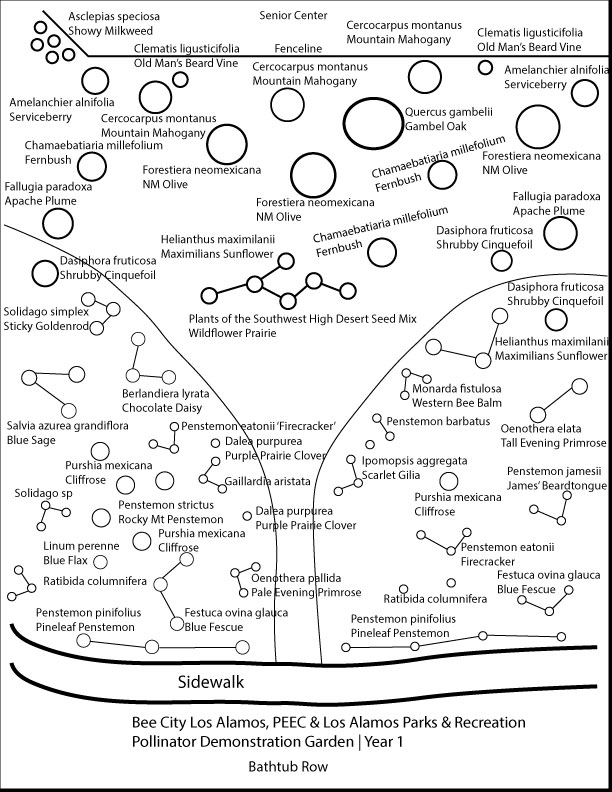

In the center area we sowed wildflower seeds, which bloomed beautifully! This is a small demonstration area of a seed sown wildflower meadow, using the High Plains seed mix from Plants of the Southwest. Along the fence closest to the Senior Center we planted native shrubs Forestiera pubescens (New Mexico Privet), Cercocarpus montanus (Mountain Mahogany), Quercus gambelii (Gambel Oak) and Amelanchier alnifolia (Serviceberry). These shrubs provide resources and habitat for native pollinators and birds and are lovely choices for home and urban gardens. A generous grant from the Carroll Petrie Foundation made these shrubs and additional perennials possible for the second phase of planting.
Unfortunately, the deer discovered and ate all of the tasty leaves on the Gambel Oak and Mountain Mahogany early on, so we installed fencing around the most impacted plants until they can get established. This has made all the difference! Chemical pesticides and fertilizers should never be used in a pollinator garden. Homemade pesticides are also discouraged as they negatively impact native pollinators. Soaps are a common ingredient in home sprays; they work by suffocating the insect, and this applies to soft-bodied insects and larvae, including our beneficials.
Along the fence transplanted Asclepias speciosa (Showy Milkweed) were salvaged from an accidental removal. Fingers were crossed that they will recover and flourish along the fence line.
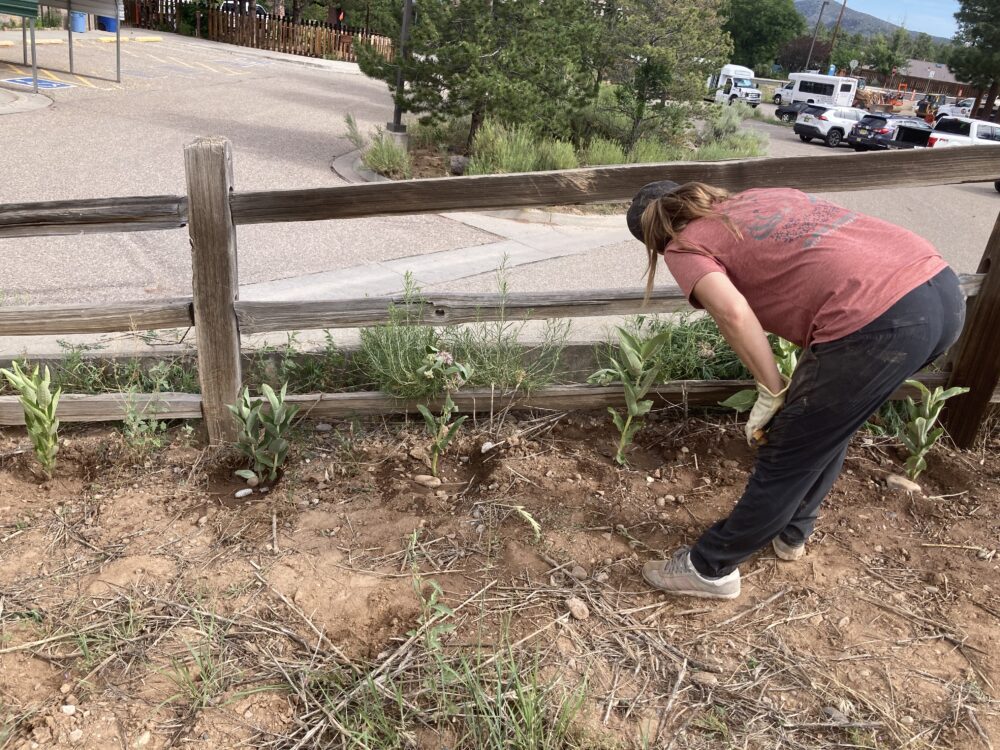
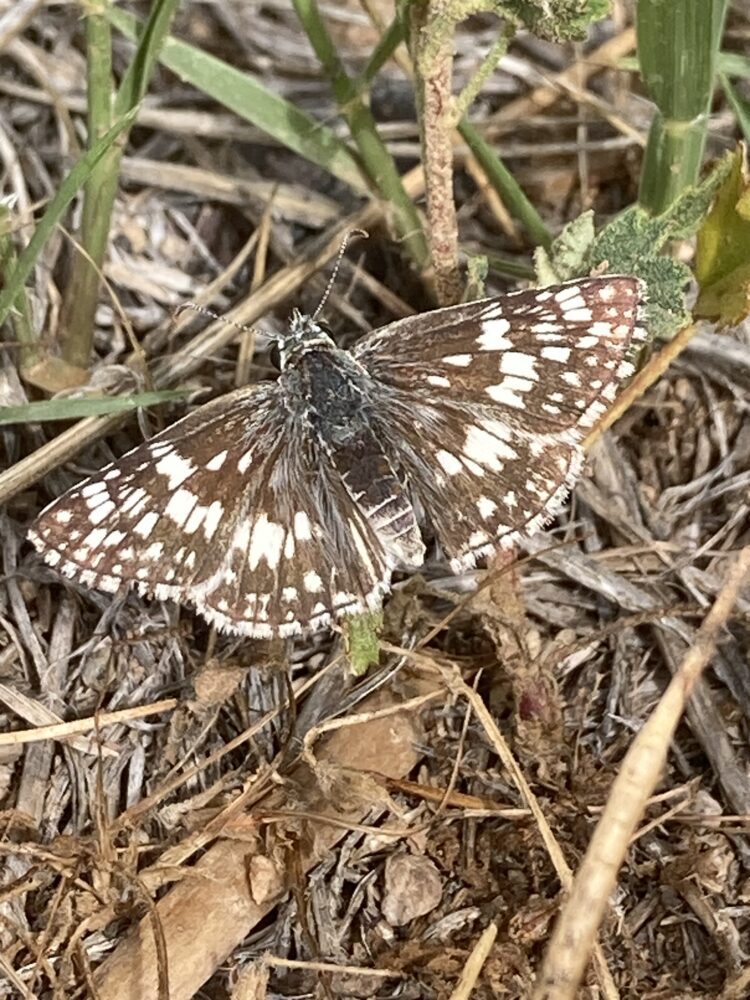
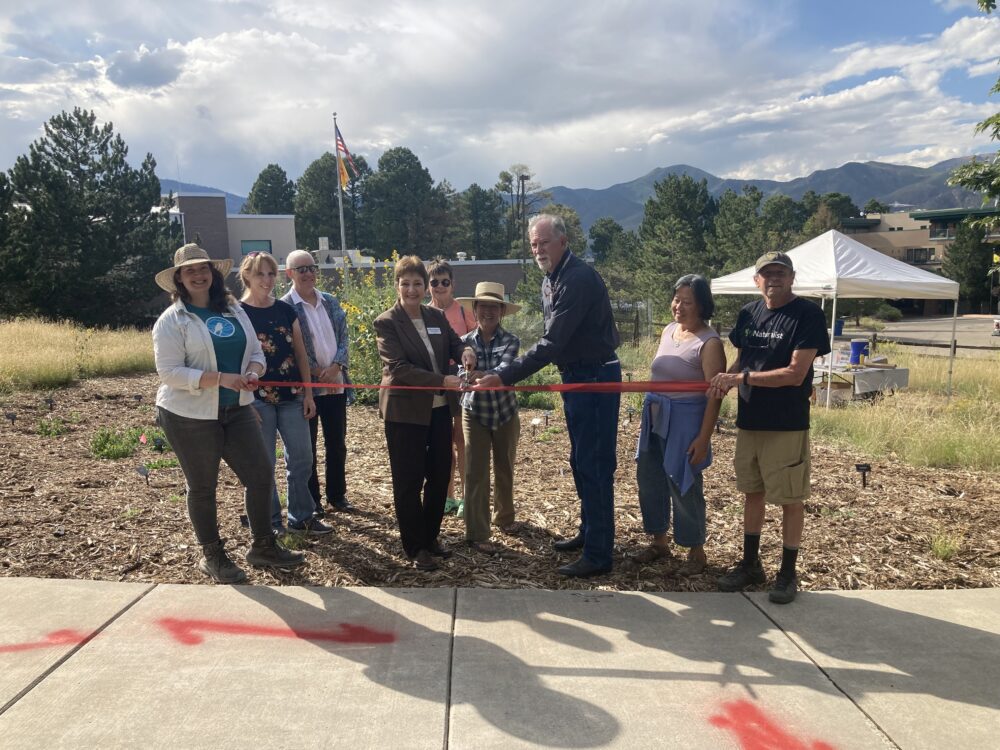
Volunteers watered and weeded the area through the dry, hot Spring. We are always looking for more help with these ongoing tasks, and we will be looking for sharp eyes to take photos of pollinators as they show up to utilize the new plants. You can sign up to volunteer at: volunteerlosalamos.org
Volunteer activities at the Pollinator Demonstration Garden, 2024
